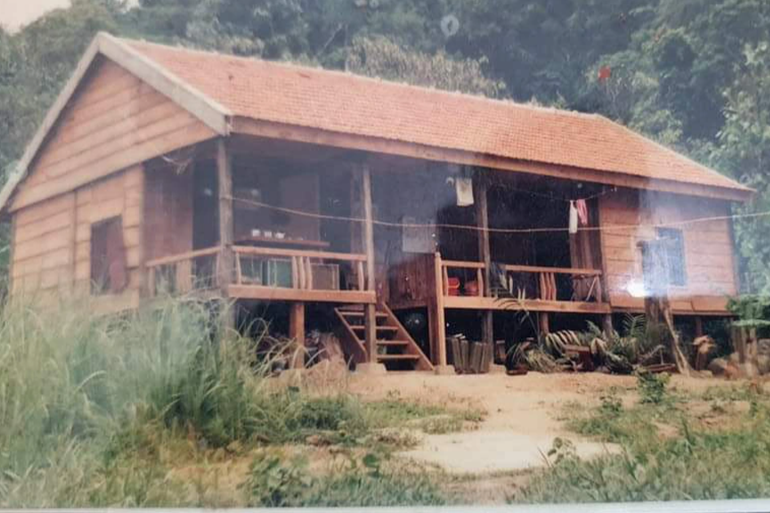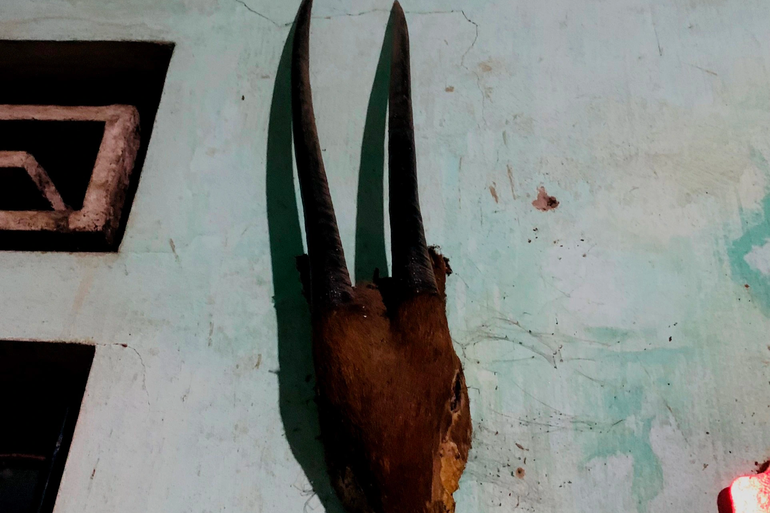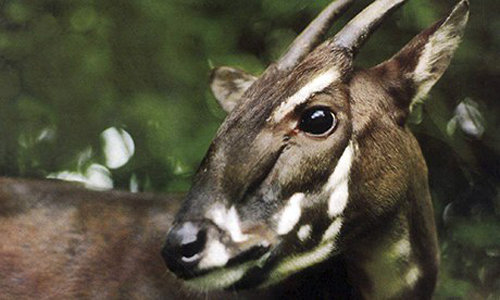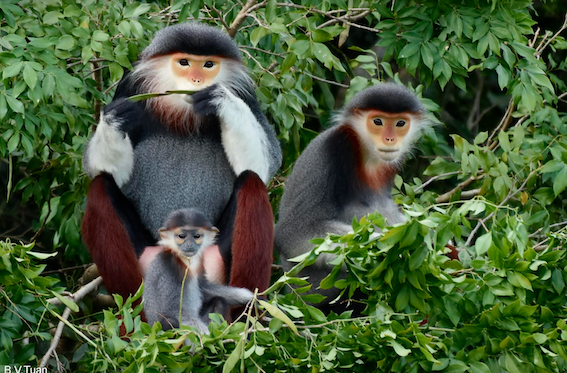The 31st Southeast Asian Games chose the saola as the mascot. Around this animal that shocked the world in 1992, there are still many interesting mysteries.
In 1992, during a survey conducted by the Ministry of Forestry of Vietnam and the World Wide Fund for Nature (WWF) in Vu Quang National Park (Vu Quang District, Ha Tinh Province), for the first time experts discovered The new animal in the world is saola.
The name saola is transliterated from Thai and Lao, meaning "straight horns". On Saola's face there are white spots "like the stars that show the brilliance in the deep forest".

The 31st Southeast Asian Games chose saola as the mascot of the Games.
The discovery of saola has shocked the world, as scientists believe that a large mammal found at the end of the twentieth century is unlikely. But, in the memories of many people in Huong Dien commune (now Tho Dien commune) and Huong Quang (now Quang Tho commune), Vu Quang district, Ha Tinh province, the image of the saola is not too unfamiliar to them. In the 1990s, people here hunted a lot of saola. However, at that time, they just called this long-horned goat.

Scientists went on a field trip in Vu Quang National Park (Photo provided by Mr. Tu).
Mr. Nguyen Tien Thanh (SN 1968), born and raised in Huong Quang commune, is no stranger to this animal. He said: “In the past, the area of Huong Quang commune was very wild with dense trees, only about 12 households lived. This animal used to be concentrated in Chi Loi stream, it takes about an hour to walk up from where we live.”
According to Mr. Thanh, in the past, the lives of people in Huong Quang commune largely depended on the forest. They mainly hunt and cut wood to live, so saola is also one of the animals hunted for food.
“In the past, hunting dogs were mainly used to hunt wild animals. We call this saola the long-horned goat because they have beautiful long, straight horns. At that time, we hunted for food, but we don't know how rare it is. A few days people caught this animal again. It was not until we were informed by the authorities that it was a rare animal, found for the first time, that we knew," said Mr. Thanh.

Mr. Tran Binh Tu with documents about saola (Photo: Duc Pham).
Mr. Tran Binh Tu - former officer of Vu Quang National Park who was guided by the research team of the Ministry of Forestry of Vietnam (now the Ministry of Agriculture and Rural Development) and WWF to guide and collaborate on the research trip, survey in Vu Quang National Park in 1990. He said: “The purpose of the survey is to support the conservation area management board in research and protection of genetic resources, varieties, species and biodiversity. learn".
Mr. Tu said, during the survey, the team of experts entered a house near the edge of the forest, and discovered that it was keeping elongated animal horns and beautiful colors. Scientists were really surprised because this set of horns is very special, unlike any animal horn that has been published before.

Saola research and conservation station right in Vu Quang National Park (Photo provided by Mr. Tu).
“This family says these are the horns of a longhorn goat. One time he went to work in the fields to trap and kill meat. Seeing the beautiful horns, they left them hanging in the house as decoration. Scientists at that time thought that this was a new animal, so they bought the horns to bring back to study and open an investigation. In May 1992, the survey team announced that this pair of horns belonged to the saola, belonging to the cow family and was first discovered in the world," Tu said.
Immediately after the saola species was announced, the Ministry of Forestry of Vietnam and WWF decided to establish a Saola Research and Conservation Station right in Vu Quang National Park.
“The saola can weigh up to 100 kg and is 84 cm tall, with beautiful horns up to 50 cm long. Saola is a shy species, sniffing people very well, so it is extremely difficult to spot them. From 1992-1997, researchers also only collected a few foot samples, without seeing a single individual saola," Tu said.

The image of the head and horns of a saola was hung in the house by people in the past (Photo: Provided by people).
Mr. Nguyen Viet Hung, Deputy Head of the Department of Science and International Cooperation, Vu Quang National Park added that the saola is a valuable living specimen for researchers of ancient animals, because over the years million years, their genome has remained the same, existing and adapted to the environment until now.
"The saola is an ancient animal that is said to be the most mysterious in the world, which only exists in the unspoiled mountains and forests on the border between Vietnam and Laos," Hung said.
According to Mr. Hung, since the day saola species was announced, Vu Quang National Park has also collaborated with scientific researchers many times to carry out a number of projects on saola conservation, but the field process could not find any. get this animal.
“The saola was recently discovered in Quang Nam and Thua Thien – Hue provinces. In Ha Tinh, for a long time, there have been very few research programs and projects to investigate this species. That's why why la still lives and exists in Vu Quang National Park is also a mystery," Hung said.
Source: Dan Tri














